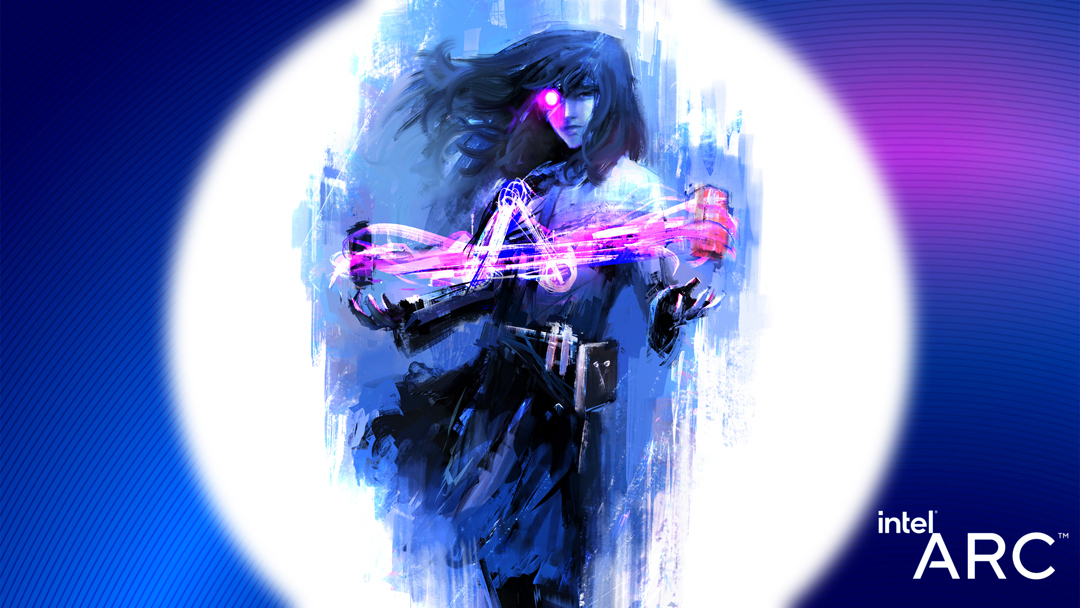Intel Arc was doomed from the start, and MSI’s new GPU won’t change that
Truth is, the game was rigged from the start

MSI has revealed its first Intel Arc GPU, a low-profile graphics card containing the budget-friendly Arc A380 board - the same somewhat-underwhelming GPU that has already been launched in China by manufacturers Gunnir and ASRock. The MSI A380 is currently only available in pre-built PCs, showing up in a sensibly-priced MSI gaming desktop on Chinese online retailer Tmall.
MSI’s new version of the A380 card is compact and doesn’t require an external power connector (it draws power directly from the motherboard's PCIe slot), which could be a boon for gamers looking for a graphics card that isn’t too power-hungry - especially in the face of Nvidia’s monstrous power requirements for the upcoming RTX 4000 series.
But it all feels a bit ‘too little, too late’ for Intel Arc. German tech site Igor’s Lab claimed last week that one AIB partner - the manufacturers who produce third-party models of GPUs for Nvidia, AMD, and Intel - has dropped out of the Arc program completely due to concerns over quality. This would be a serious blow for Intel, especially when the company has already been facing major difficulties in the Arc rollout.
Opinion: Intel has been on the back foot with its GPUs for years, and will struggle to catch up now

While Intel’s current-gen Alder Lake CPUs might be doing just fine, its GPU venture - which it first announced three whole years ago - has seemingly stumbled over every hurdle in its path. Covid delays, the global chip shortage, and presumably the war in Ukraine have all badly impacted the development and rollout of the Arc series, and it looks like Intel might have fallen into a game it has no way to win.
See, while Intel has been busy trying to get its first-generation Arc GPUs up to speed with Nvidia and AMD’s current-gen counterparts, those two competitors haven’t exactly been resting on their laurels. Nvidia’s RTX 4000 and AMD’s RDNA 3 GPUs are on the way, and current performance details suggest that Intel is going to be left in the dust almost immediately.
The constant ball-fumbling on Intel’s part hasn’t helped, either. From its own performance-boosting feature causing issues to a single missing line of code tanking ray-traced performance, Arc has had a seriously rocky initial launch; and that’s before we’ve even properly seen the desktop cards on sale in the West.
Even beyond troubles like these, general performance has been lackluster. The higher-end A7 cards have failed to impress, and while the A380 seen here is decent, it’s not doing anything to set itself apart from the competing RTX 3050 and RX 6400 cards. Lower-spec A3 cards have been even weaker from the performance-per-dollar perspective.
Sign up for breaking news, reviews, opinion, top tech deals, and more.
It’s honestly hard to see how Intel could possibly claw this one back from the brink. While its current best hope seems to be to position itself as a wallet-friendly alternative to Nvidia’s pricey but powerful GPUs, it’s only going to take one strong budget option from Nvidia or AMD to sink Arc for good. It’s sad, because a third major player producing graphics cards was exciting, but sadly it looks like Arc isn’t going to catch up for a while - if at all.

Christian is TechRadar’s UK-based Computing Editor. He came to us from Maximum PC magazine, where he fell in love with computer hardware and building PCs. He was a regular fixture amongst our freelance review team before making the jump to TechRadar, and can usually be found drooling over the latest high-end graphics card or gaming laptop before looking at his bank account balance and crying.
Christian is a keen campaigner for LGBTQ+ rights and the owner of a charming rescue dog named Lucy, having adopted her after he beat cancer in 2021. She keeps him fit and healthy through a combination of face-licking and long walks, and only occasionally barks at him to demand treats when he’s trying to work from home.